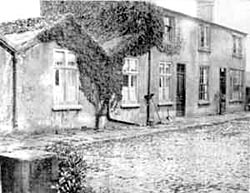< Previous | Contents | Next >
Nottingham Barracks
 |
In olden days troops were quartered in towns in a very indiscriminate manner, and townspeople were compelled to accommodate men-at-arms whether they desired their company or not.
Later the difficulties and inconveniences of this system were recognised and so soldiers were billeted upon various innkeepers.
At first the innkeepers were glad to have them, for they brought very considerable grist to their mill, but as discipline was sadly lacking in the mediaeval army, the innkeepers soon got tired of their somewhat unruly guests, and the whole system of billeting fell into disrepute.
The Nottingham innkeepers were, therefore, not at all sorry to hear, in the year 1792, that it had been decided to build a cavalry barracks upon the summit of Nottingham Park, and accordingly the foundation of the barracks was laid on the 6th of August of that year. The ground upon which the barracks stood was given by the Duke of Newcastle. The buildings were of brick, and contained officers’ quarters, a suttling house, and a hospital, the whole being surrounded by an extensive yard enclosed within a brick wall.
The presence of the cavalry in Nottingham was rendered all the more necessary in the early days of the 19th Century by considerable industrial troubles and various regiments occupied the quarters until they were closed about 1856.
The barracks were used as the cavalry headquarters of the East Midland District until 1855, when they were moved to Sheffield. It was out of these barracks that the Scots Greys marched on their departure to the campaign of Waterloo and again upon their departure for the Crimea on 3 July, 1854.
Very scanty remains of the barracks are left nowadays, but the courtyard and the few houses and buildings standing at the end of Barrack Lane, off Derby Road, have a certain charm as well as an historic interest.
